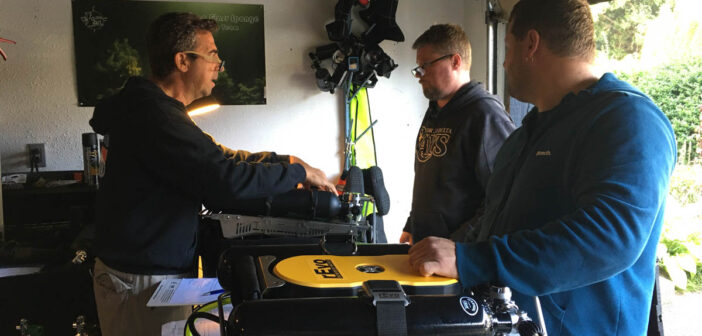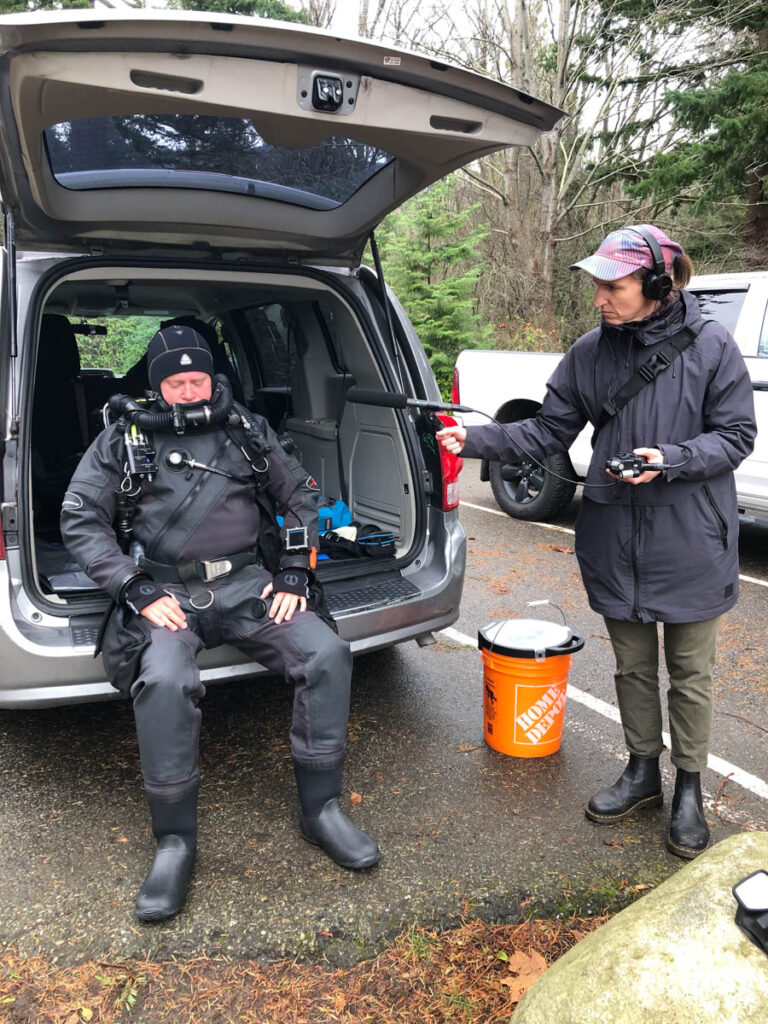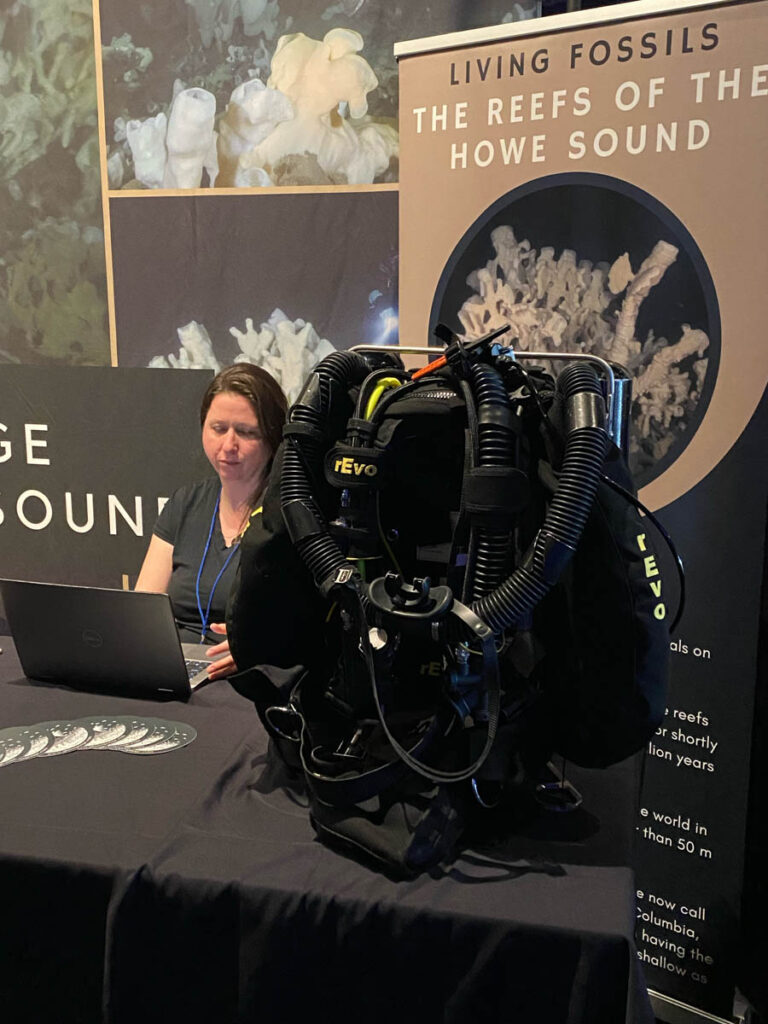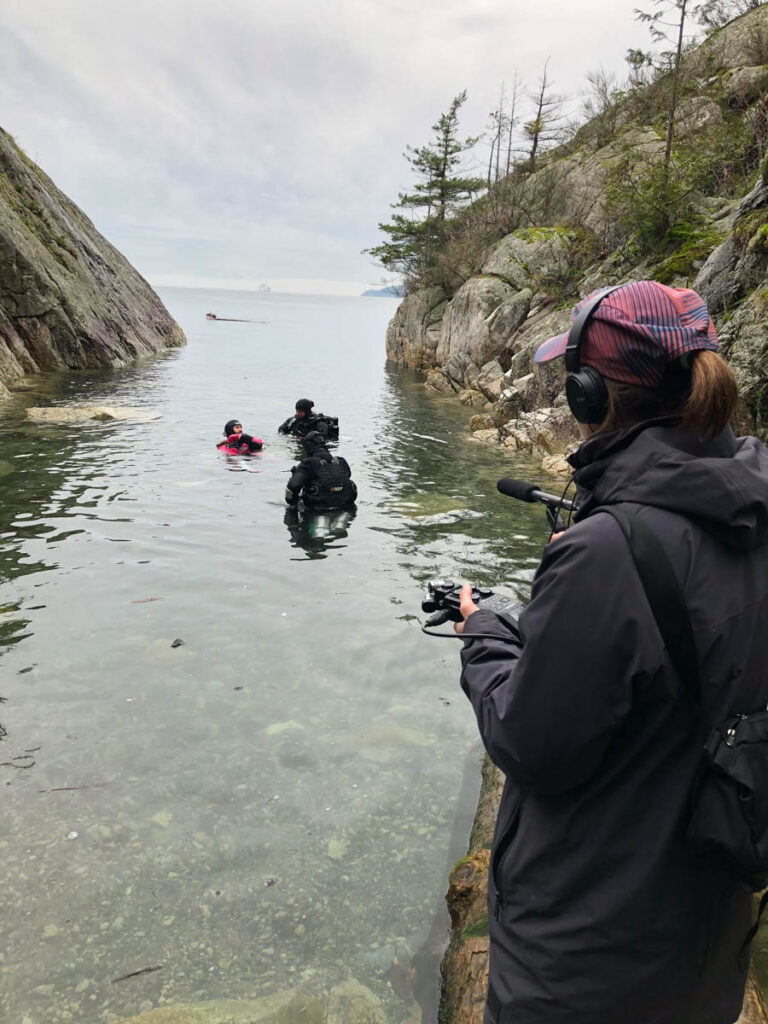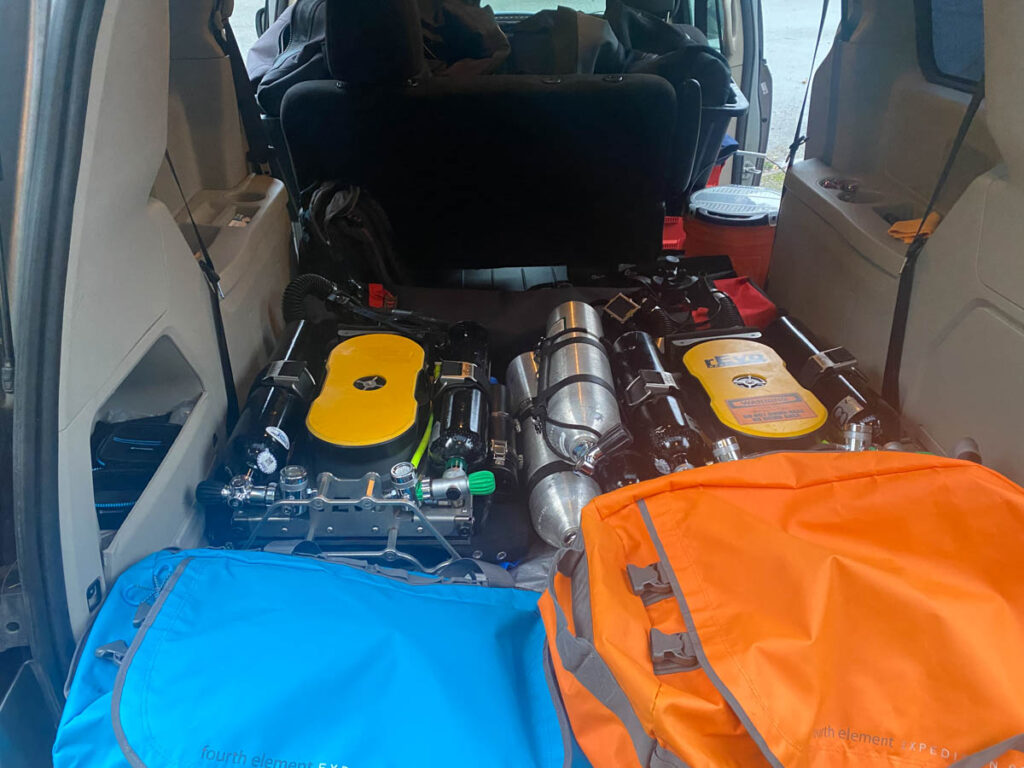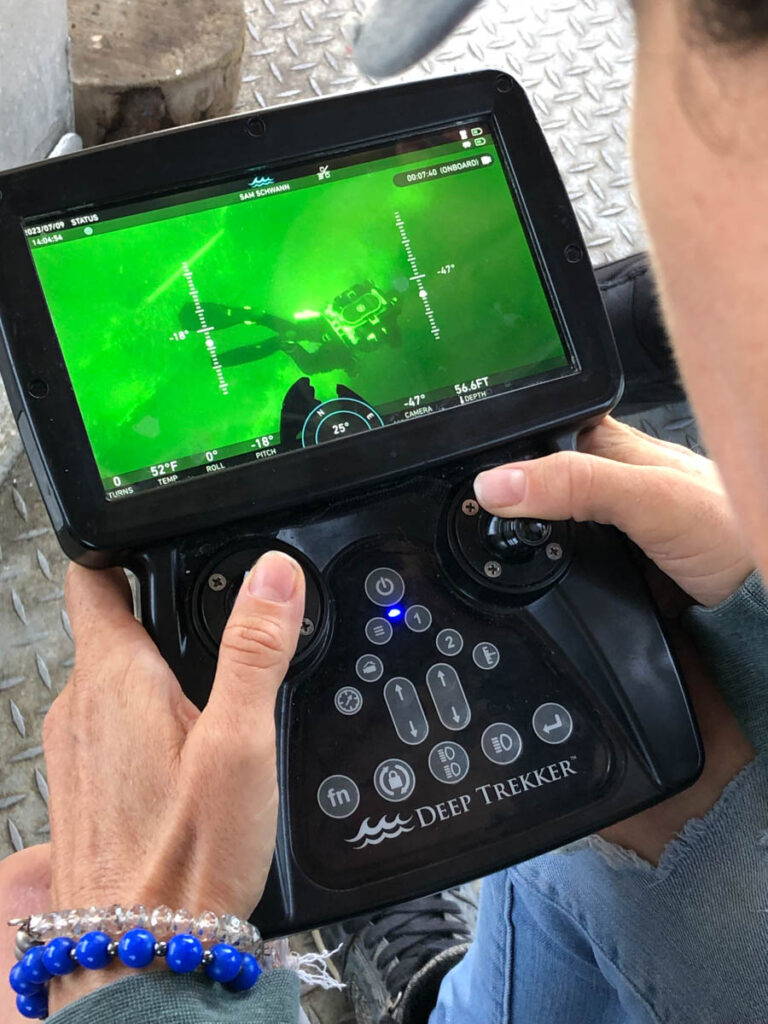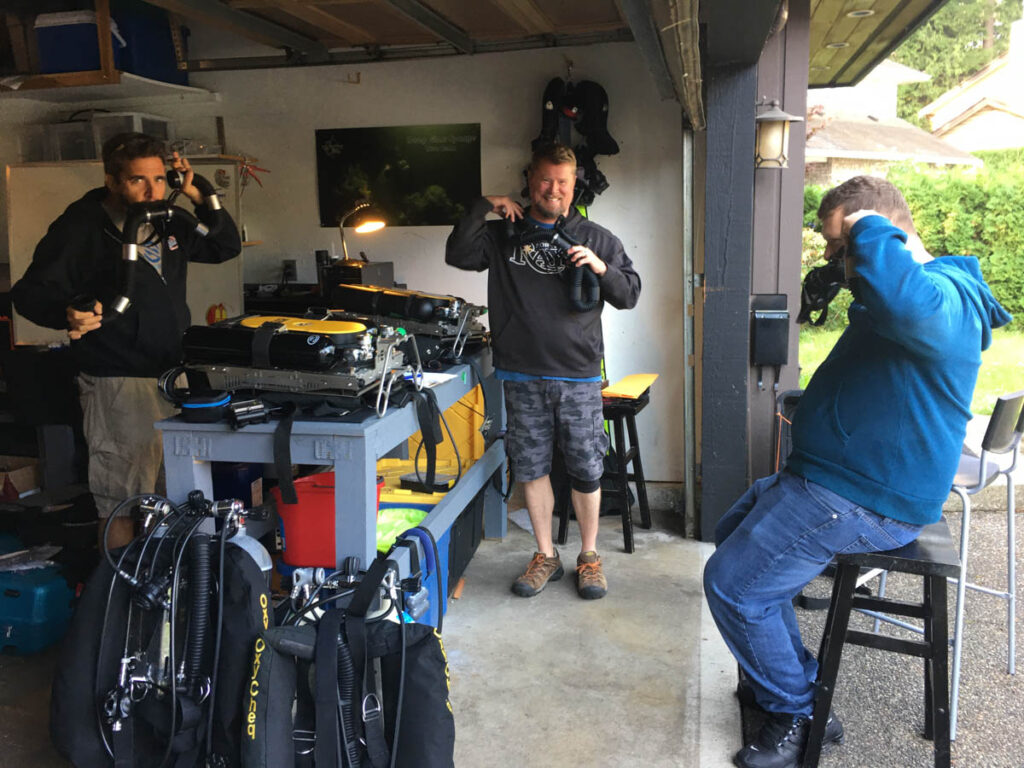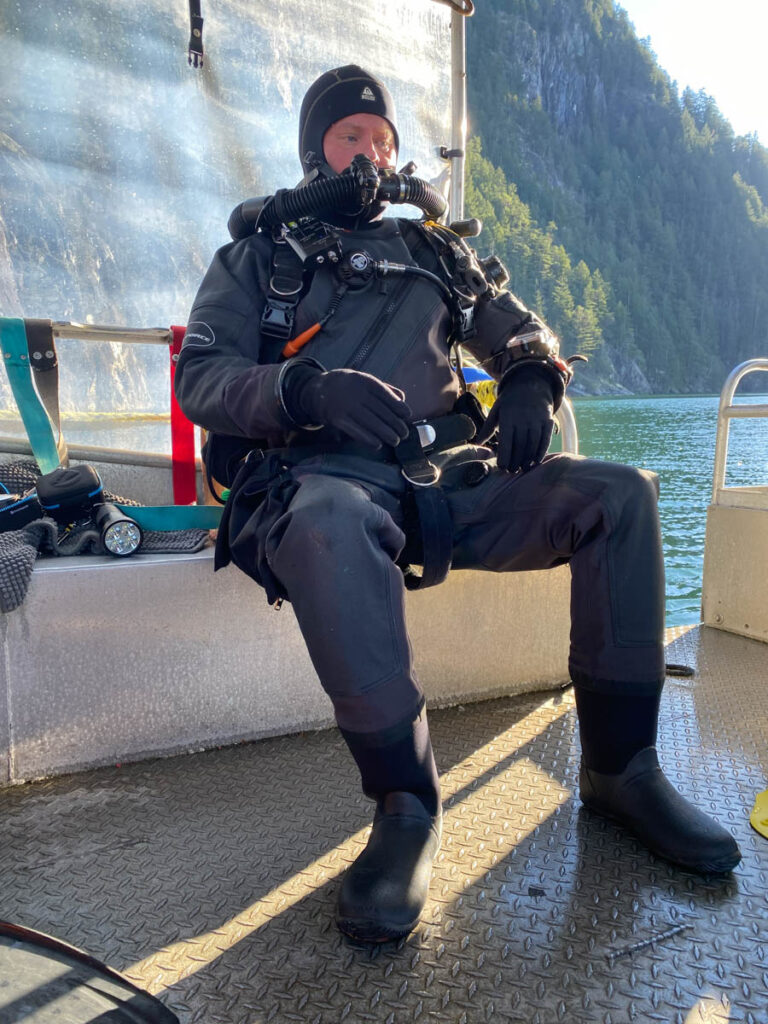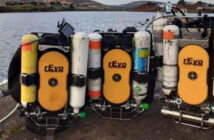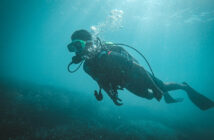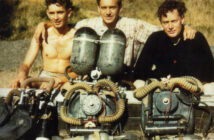After diving and teaching on open circuit for over 25 years, I’ve noticed a recurring question that keeps popping up.
“What took you so long to make the switch?” or “Why bother switching to CCR now?”
Back in 2001, I had the opportunity and took my very first closed circuit rebreather course. It did not go well. Not because of the instruction or the unit I was on, but we encountered some mechanical problems so to be honest I never felt relaxed during any of the dives. I decided to stick with the devil I know and continued on with open circuit. Also at the time I owned a dive shop and was teaching a lot of technical open circuit training, so I didn’t have the time to fully commit to making a switch. I couldn’t be bouncing back and forth between CCR and OC to build that skill muscle memory that is so important in diving. Plus the cost to conduct a trimix was comparatively cheap back then (long gone are the days of $70 T cylinders of Helium, whereas now your lucky to find one for less than $600 per cylinder) so the argument that you would have to do years of deep trimix diving to break even wasn’t an incentive to me.
Flash forward, after spending some time with a couple of my dive buddies who did make the switch a number of years prior, I was able to start asking some questions from those who I trust about their experiences on CCR and what they were saying about the differences between the two options was shocking. What I was hearing and came to understand is that CCR is just a much safer option than OC for technical diving! Yes, you read that right, I’m also aware of what the statistics are saying about CCR diving currently. Now if you’re done spitting your drink out, keep reading.
Unlike 20 years ago there are around 24 different manufactures out there, how did you decide what unit to go with?
I’ll admit, it was daunting in the beginning as I started looking at different models and configurations. I wasn’t even sure what options that I should be looking at. The CCR community in the Pacific Northwest is relatively small so it can feel a bit overwhelming if you don’t have access to lay your eyes on a particular unit, so it can feel like you are buying sight unseen.
To get around this I did what most people do, I started asking other CCR divers questions. Everyone had their opinions about why they chose a particular brand, but they also wanted to share why they wouldn’t dive with brand X or brand Y (even if they hadn’t tried X or Y). It was sounding like every model on the market had their pro’s and con’s. I felt like I was spinning in a circle and didn’t feel like I had got any farther ahead in deciding. Don’t get me started about going online to get some advice, that was even worse. I felt that I might as well have gone into my yard and put on a blindfold then kicked a hornets nest three or four times then tried to run away.
Then I had a lightbulb moment. I started to realize that there might be different brands out there, but they are all really doing the same thing more or less. I decided to look at it from the perspective like you do when buying a vehicle. They all get us from point A to point B, but what do I need to get out of it? Do I need a minivan to haul the family around or a pick up truck for work?
With that mindset I found it easier to make sense of all the information and based on the type of diving I do and I was able to narrow my options down to 3 units. In the end the rEvo was the best option for me with the double scrubber, RMS system, fully independent computers and its overall clean configuration made it standout.
How did you find the transition from OC to CCR; was it difficult?
To tell you the truth I was expecting to have a much harder time switching over. I assumed after all my years diving open circuit that it would be like starting all over again, so I kept my expectations low.
The first couple of pool dives went smoothly and by day 3 when we hit the ocean I was feeling really comfortable. Then the buoyancy gremlin made an appearance. I can humbly say I did a lot of kneeling on the bottom for the first 6 dives as I played with my buoyancy. It felt like I had to rewire my brain to register the fact that when I’m breathing, the gas I am exhaling doesn’t go out and into the water. It stays in my loop so I need to manage the volume like I do in my BC or drysuit.
For example, as I was descending I would see the bottom coming and would try and take a deep breath to help slow my descent. That didn’t work. I would slam into the silty sea bed causing a huge mushroom cloud to envelope me. I would swear into my loop to the diving gods because I had realized that I had to be quicker on adding more diluent to my loop (or the reverse on accent to vent gas from my loop). Our instructor, Ron Waxman, was very encouraging “guys, don’t beat yourselves up about it” and assured us that this will pass. He was right.
Another nice surprise was that I found breathing off the loop much easier than I thought it would be. I read that it would feel like more work on CCR, but I found the complete opposite. CCR feels much more natural whereas you don’t notice your breathing, very much like that I am not noticing my breathing as I type this article. On OC I thought about my breathing more especially when I was trying to hold still in order to film something. Before I would exhale slowly and then hold completely still without any gas in my lungs just to get a bit closer to a school of fish without scaring them off (all the while my lungs would be enraged at me as if they were saying “ come on man give us some gas!”). I still find that I am catching myself doing that slow exhale once in a while and it makes me smile and I think ”Hey, you don’t need to do that anymore dummy!”
Have you found that moving to a rebreather has changed the way you dive?
In so many ways! There is the obvious stuff you hear about diving a rebreather, like warmer breathing gas, less time pressure, you don’t have gas escaping from your regulator every few seconds and the fish are not as jumpy and are more relaxed. I found these to all be true, but it wasn’t until I was physically diving that I began to truly appreciate and discover how my diving was really going to change!
Becoming part of the underwater environment
I was on a dive with one of my good buddies who was also on CCR and he stopped to pet a five foot lingcod on the chin. And it let him! So when I say you can get close, I’m not kidding. In all my years of OC diving I didn’t fully realize how much the sound of gas exiting through your regulator baffles out the other sounds in the ocean. The amount of external noises I hear on every dive has made me realize the ocean is a really loud place. I had to become quiet to hear it! The overall feeling of being on CCR is that I’m melting into the environment around me (much more than on OC) which has made me feel much more relaxed and peaceful during dives.
More versatility with gas options
One of the other aspects that is a real game changer is the flexibility and safety when it comes to gas management. If there was a problem with my on-board gas supply during a dive (e.g. the loss of one or both my gasses) I can plug in one of my OC bailout cylinders directly into the rebreather. This is what’s called running off board gas and can give me hours of extra gas supply. It’s such a vast improvement in overall safety compared to OC as technical divers, but I still make a habit of entering my buddies OC gas mixes into my three Shearwaters as OC bailout and CCR offboard gas options. So to all my dive buddies seeing me look at your deco or bailout tanks, I’m not scrutinizing your configuration I’m looking for that extra LP pressure inflator.
Lack of the need for the fast descents
Descents are almost always the most stressful stages of the dive, so this was really mind-blowing for me at first. The lack of the need to get to depth as fast as you safely can was gone. As technical divers we know your descent time (or the time it takes you to get to your bottom/target depth) is part of your total bottom time, so there’s always a time pressure on a diver/team to get to the bottom as quickly as you can. If you end up having a slower descent than planned, it’s time lost on the bottom because of both a fixed time at depth and the lack of bottom gas. Not needing to rush leads to safer dives overall. Now I can take my time doing equipment checks with my buddies and as I descend I am able to be more aware of my environment.
Less decompression stress
You can write down all the pro’s and con’s on a list all you want, but if you are technical diving I think this one aspect of CCR diving is worth it in itself to make the switch.
This was the biggest change to my diving. On OC we have to stay on a very precise decompression schedule and run time because we have fixed bottom and deco gasses and if you’re not ascending and changing to your next highest gas mix you are not off gasing efficiently as you need to be. Of course on CCR there is still a decompression obligation involved of observing our TTS (time to surface), but what I quickly realized that as long as I had an appropriate bailout for my max depth and didn’t exceed my planned TTS, I would always be on the best gas mix efficiently shedding nitrogen/Helium from my tissues as I was ascending. Every dive I have made on CCR I’m finishing my deco obligation much faster than our plan called for. As I leave the bottom with 45 minutes TTS and my first planned stop starting at 50ft/15m. By the time my dive buddy and I reach our first stop our TTS has dropped to 20 minutes! By the time we have completed the 45 minute planned deco we have been clear of our deco by 20 minutes. For an older Technical diver like myself this amount of less decompression stress on my body at the end of and post dive is very reassuring (coupled with the fact that I’m now wearing a 65Lbs/29k unit on my back and not a 125lbs/56k, so not only did I shed a bunch of weight but I also got rid of a Chiropractor!)
Would you recommend people still take OC technical courses before starting down the CCR path?
Yes I still believe that people should take some OC technical training before moving over to CCR especially if you’re planning on eventually technical diving on the rebreather that is. That way if you ever had to come off the rebreather, you are going back to OC and it’s something you would already have experience doing. One of the skills you need to complete in the Mod 1 CCR course is on the bottom portion of the dive bailout of the unit and finish the dive on OC. This was the easiest skill of the course for me at least, I was just going back to what I knew and have been doing for the last 25 years.
Are you going to continue with your project of diving the glass sponge reefs but now on CCR?
Yes! This has been one of the most exciting aspects about making the switch to a rebreather. We’ve been working on this project for almost a decade now and it requires some demanding diving for us to be able to spend a limited amount of time observing and documenting the reefs. On OC we would have to descend as fast as we could to maximize our bottom gas and to stick to our dive plan. This would leave us with only minutes to find the animal we want and if we were lucky 10 to 15 minutes to film before we had to make our ascent. On CCR we will have way more flexibility and safety on the bottom portion of the dive because before there was always a feeling that we needed to rush to get shots because we have so little time and limited gas supply. With CCR we have time to finish the shot and then even stop and check our time to surface (TTS) and decide if the crew has time for one more.
Being a grass roots citizen science team of divers, it’s also going to make a huge difference to our gas bills. For three bottom divers to do a dive somewhere between 230ft/70m to 280ft/85m the cost per dive was around $1000. It’s now going to be around $100, yes I just dropped a zero!
My next dive chapter
For me it’s also about making the most out of my diving over the next twenty years. I have always looked at the technology, be it OC or CCR diving as a tool to get my physical self to a place underwater and to keep me safe while I explore. So if you are technical diving or looking to up your game as a photographer or would like to try your hand at petting fish, I urge you to take another look at making the switch!
About The Author, Hamish Tweed
Hamish started diving in 1991 and has been working professionally in the dive industry for the last 30 years. Teaching for PADI, TDI and IANTD he has certified hundreds of students in a range of technical diving courses. In 1998 Hamish earned his IANTD Instructor Trainer and Advanced Trimix Instructor certifications and was teaching advanced technical diving as the Head Instructor for IANTD Canada the largest Technical agency in Canada at the time. He has also organized and has led over a 150 trips and expeditions throughout B.C., Canada and around the world. An avid underwater videographer, Hamish has had the privilege to explore and document the waters in his own backyard, as well many locations around the world from shipwrecks in Scotland and Micronesia to the labyrinth cave systems of Mexico. He continually shares his experiences and images with others through teaching technical diving, speaking engagements and writing articles.




